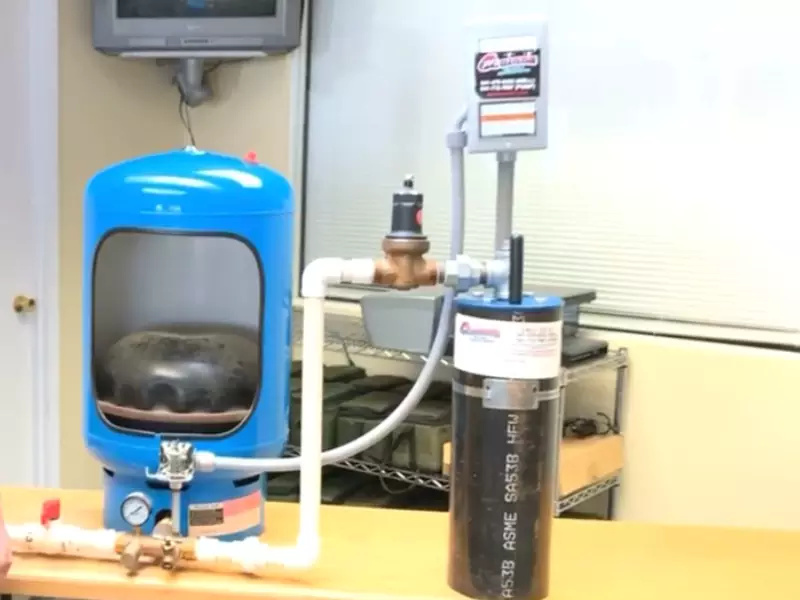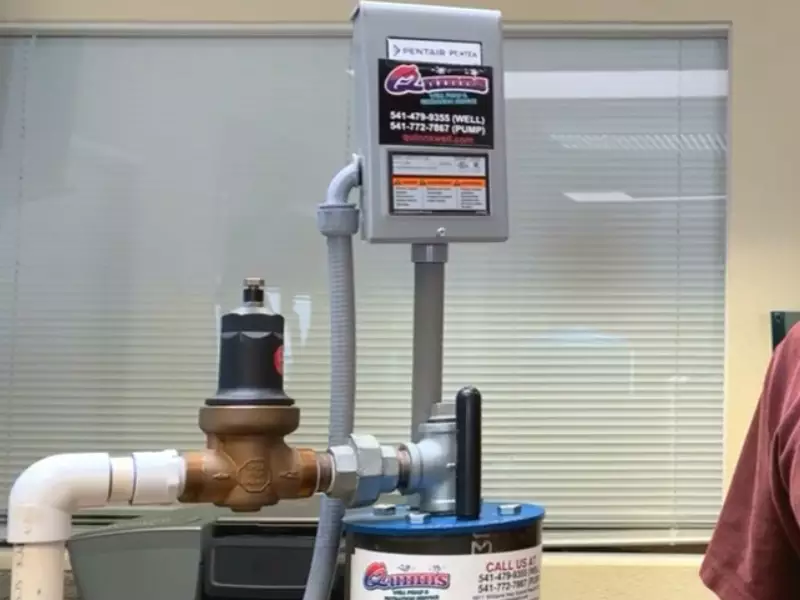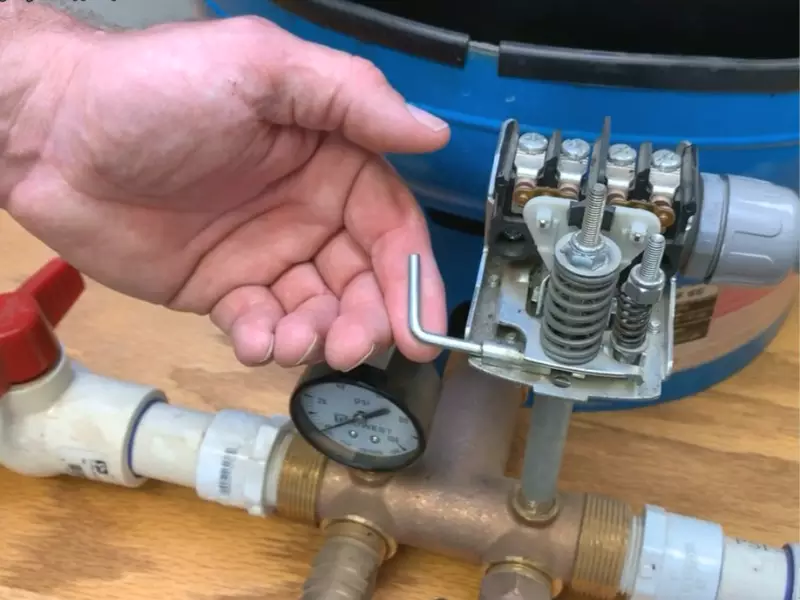Well water remains an essential resource for countless households worldwide. Tapping into underground reservoirs, these wells provide a seemingly endless supply of potable water. However, modern well systems rely on electric pumps, making them susceptible to power outages.
The simple answer: the safety of well water after a power outage largely depends on several factors, including the duration of the outage and the condition of the well system. Contaminants might seep in, and bacterial growth can pose health risks.
Power outages can disrupt the harmony of this resource, making every drop of well water a potential health hazard. Therefore, it becomes crucial to address safety concerns promptly.
Power Outage: What Happens?
Power outages can be a significant disruption, especially when it comes to maintaining essential services like well water supply. However, to understand its impact on well water, we must first comprehend what transpires during such an event.

Immediate Impacts on Well Systems
Electric-powered well systems, particularly those that rely on submersible pumps, are severely affected during a power outage.
- Electric Pumps and Water Flow: Most well systems rely on electric pumps to draw water from underground. Without power, these pumps come to a standstill, halting the supply of water to households.
- Pressure Changes: The system’s pressure might drop without a functioning pump. This drop can create a vacuum effect, leading to potential backflows from contaminated sources or allowing impurities to seep into the system.
Potential Risks Following an Outage
Power outages, especially prolonged ones, can introduce a host of risks to well water systems.
- Bacterial Contamination: Stagnant water is a breeding ground for bacteria. Without the circulation provided by the pump, harmful bacteria like E. coli can proliferate, posing severe health risks.
- Chemical Imbalance: Water, when stagnant, can undergo chemical changes. Minerals might settle, pH levels can fluctuate, and previously dissolved gases might escape, altering the water’s chemical balance and safety profile.
- Structural Vulnerabilities: Extended power outages can also exacerbate minor existing vulnerabilities in the well structure. For instance, seals might deteriorate faster, or cracks might widen, allowing contaminants to enter.

Safety of Well Water Post-Outage
Restoring power doesn’t instantly equate to safe well water. It’s paramount to gauge the aftermath and take corrective actions.
Identifying Contaminated Water
The first step post-outage is to determine if your water has been compromised.
- Physical Signs: Changes in the water’s appearance are evident indicators. Discoloration, unusual cloudiness, or the presence of particles are all signs of potential contamination.
- Sensory Indicators: Trust your senses. An off-putting odor, especially a sulfuric or rotten smell, is a warning. Similarly, if the water tastes metallic, overly salty, or simply different, it’s best to be cautious.
- Equipment Malfunctions: Listen to your pump and other equipment. Unusual noises or erratic behavior could indicate damage during the outage, affecting water safety.
Minimizing the Aftermath
Before restoring your regular water usage, certain steps can help mitigate risks.
- Boiling: One of the most effective ways to ensure water safety is by boiling it. A rolling boil for 1-3 minutes can kill most pathogens, making it safe for consumption.
- Bottled Water: Until you’re certain of your well water’s safety, consider relying on bottled water for drinking and cooking.
- Disinfectants: Chemical disinfectants, especially those containing chlorine, can eliminate a range of contaminants. Ensure you follow dosing guidelines and allow ample contact time for the disinfectant to work.
- Water Filters: While not a replacement for disinfection, quality water filters can further reduce potential contaminants, enhancing safety.
Post-Outage Checks for Well Systems
Returning to normalcy requires more than just flipping a switch. A thorough examination can ensure your well system is in prime condition.
Examine the Physical Structure
Assessing the physical aspects of your well is crucial to detect and rectify vulnerabilities.
- Well Head & Seals: A visual inspection can reveal potential issues. Ensure that seals are intact, preventing contaminants from infiltrating. Check for signs of damage, cracking, or unusual dampness around the well head.
- Electrical Systems: Power surges before or after an outage can wreak havoc on electrical components. Ensure that switches, circuit breakers, and the pump itself show no signs of damage or malfunction.

Testing the Water
Even if everything seems normal, it’s wise to get your water tested after an outage.
- Professional Testing: Many service providers offer comprehensive water testing. They can identify bacterial contamination, chemical imbalances, and other potential risks that might not be evident through a casual inspection.
- Home Test Kits: While not as exhaustive as professional tests, home kits can provide a quick assessment of water safety. They can detect common contaminants and pH imbalances.
Maintaining Safe Well Water Practices
Just as power outages can be unpredictable, the safety of well water after such an event can be equally uncertain. However, by adopting a few essential practices, you can significantly increase the safety of your drinking water.
Regular System Maintenance
Routine check-ups and maintenance are vital in ensuring the longevity and efficacy of your well system.
- Scheduled Inspections: Having professionals inspect your well system periodically can pinpoint vulnerabilities before they evolve into severe issues.
- Replace Aging Equipment: Pumps, seals, and other critical components have a lifespan. Replacing them proactively ensures a seamless and contamination-free water supply.
- Cleaning & Sanitation: Cleaning the well and its components, coupled with regular sanitization using approved chemicals, can fend off bacterial growth and buildup of impurities.
Educate & Equip
Knowledge is your best defense. Equip yourself with the right information and tools.
- Stay Informed: Understanding the potential hazards and how they manifest is crucial. Regularly updating your knowledge about well water safety can offer a better defense against unforeseen risks.
- Emergency Kit: Have a well-stocked emergency kit. This should include alternate power sources (like generators), bottled water, disinfectants, and basic repair tools.
- Backup Plans: Consider investing in backup power systems or manual pumping solutions. This way, even in prolonged outages, you have a way to access and purify your water.
Frequently Asked Questions
What immediate actions should I take post-outage?
Immediately after a power outage, refrain from consuming well water directly. Start by inspecting the system for obvious damages and then boil or disinfect the water before consumption. If feasible, use bottled water until you’re certain about the safety of your well water.
How often should I test my well water?
Testing post-outage is vital, but for general safety, it’s recommended to test your well water at least once a year. If your area is prone to flooding, frequent agricultural runoff, or industrial pollution, consider testing more often.
Can I rely on home water test kits post-outage?
While home kits can offer a preliminary assessment, it’s always wise to complement them with professional tests, especially after events like power outages which can significantly compromise water quality.
Conclusion
Power outages, while a mere inconvenience for some, can be a significant disruptor for those relying on well systems. Immediate and aftermath effects on well water require attention, knowledge, and proactive action.
Ensuring your well water’s safety post-outage isn’t just about addressing the present, but also about preparing for the future. Through regular maintenance, being well-informed, and having backup plans, one can significantly mitigate the risks associated with power outages, ensuring a safe and steady supply of water.